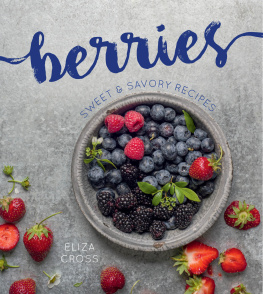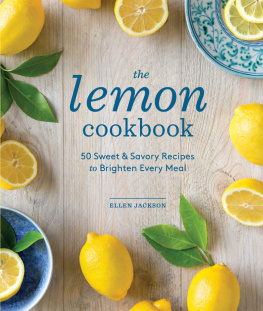

Contents

Introduction
I have always had a sweet tooth. For those of us who consider a cracking pudding to be the ultimate eating experience, it seems inconceivable that there are people out there for whom desserts are nothing more than a sugar-laced mystery. For some, sugar represents a lifelong obsession, for others its a complete waste of time. I am firmly in the sugar camp, believing that puddings deliver pleasure in a way that simply cannot be achieved with savoury food. A meal seems incomplete without a sweet conclusion and, for me, one of lifes great delights is to end a first-class meal with a first-class dessert. No matter how much has gone before, I always have the capacity to indulge in the sweet stuff.
I arrived in London from South Africa as a young lad. We lived in a Kensington backwater near a small parade of shops, including a newsagents. My brother and I would spend hours combing the streets for dislodged lead wheel weights that had become embedded in the tarmac. We would gouge them out, melt them down and sell them to the local scrap-metal merchant, spending most of the proceeds on sweets from this lovely little shop. South Africa had sweets, of course, but not like this. Not in huge jars, row upon row, shelf upon shelf. How I have any teeth left at all is a mystery to me.
My mum was, and still is, a great cook. As far as puds go, she had a pretty good repertoire, knocking out a mighty fine upside-down cake, a sublime crme brle and wonderful cakes. Banana custard was a weekday staple good when served freshly made, better if left long enough for a skin to form, and best of all from the fridge the next day. There were jellies, crumbles and meringues galore. Of all the puddings that my mum made, I enjoyed lemon surprise pudding the most. A rich lemon batter is poured into a deep dish and baked, causing extraordinary things to happen. The mixture quietly separates into two layers an airy, lightly crusted top half with a heady, unctuous pool of curd-like lemon custard lurking below. The key to enjoying this was to let it cool slightly before delving in with a spoon, lacing its centre with cream and allowing it all to come together in perfect hedonistic harmony.
The fascinating thing about sweet foods is their capacity to bring happiness. Savoury food, particularly when coupled with a rampant appetite, can give immense pleasure, and I am every bit as much a savoury person as a sweet one. But as I sit here writing the list of puds from my distant early years, it brings happiness to the moment. Desserts do not need to cater to hunger that, generally speaking, has been dealt with by the preceding courses. Desserts are surplus to requirement. They are wholly indulgent little pleasures that satisfy the soul in a unique fashion.
When I went away to university, there were two fundamental changes in my life: no mother nearby to cook for me and no money in my pocket for eating out. This was when I did my most significant research into chocolate bars. I still acknowledge the brilliance of their creators, for the treats that are machine produced by the million are often truly delicious. An understanding of how to deliver pleasure is demonstrated in the world of chocolate bars perhaps better than anywhere else. The combination of chocolate, biscuit, caramel and maybe nuts has been presented to us in countless formats, yet the great classics of years gone by have never been ousted from the shelves. Crisp biscuit, brittle chocolate, chewy caramel and roasted nuts its not rocket science, yet all these years down the line the quest to innovate distracts chefs from their primary purpose of simply producing something delicious to eat. How many attempts to displace the classics have failed? How many self-conscious chocolate bars and desserts have completely missed the mark?
After I graduated, I spent a summer working in a chteau in the Dordogne. Three dishes stay in my memory: gratin de salsifis au parmesan, brochettes de ris de veau au madre and that great classic, tarte Tatin. It was my first encounter with tarte Tatin, a dessert that has the potential to be as delicious as it is famous yet, more often than not, lets us down. Once in a while we get served a cracker, so good that we forget the disappointment of the preceding ten, and so the cycle goes on. The finest tarte Tatin I have ever eaten was made by Roger Pizey, the pastry chef at Harveys (Marco Pierre Whites legendary outpost), where I worked for a while. Four ingredients: apples, butter, sugar and puff pastry. Deceptively simple. Yet, with a little know-how, a decent pan and a furnace of a stove, these four ingredients can be transformed into one of the greatest creations of all: a deep, rich, golden mass of caramelised apple slumped in a rigid, glistening, caramel-laden pastry shell, leaching its excess sauce when turned out on to a plate. Top this with freshly churned vanilla ice cream and youre away.
On my return from the Dordogne, I went to work in the contract catering arm of the renowned Roux brothers empire. Here, while struggling with a steep learning curve, I watched the resident pastry chef from afar. Day after day she produced the wonderful Roux classics. Dlice au cassis was unlike anything I had ever seen before. Such technique, such beauty and so delicious a blackcurrant mousse, set in a ring mould on a layer of wafer-thin sponge and topped with an intense, deep-purple glaze of staggering gloss and finish. Tarte au citron appeared most weeks too. Perhaps the best of all tarts, it became ubiquitous on dessert menus during the 1990s probably off the back of the fame of Marcos Assiette of Lemon. The origins of this dish in the UK, however, rest, I am sure, with the Roux brothers. I have made many lemon tarts in my time and I like to think I know what I am doing. There is always an air of apprehension and anticipation at the outset of every lemon tart journey. I undoubtedly know what constitutes a perfect one. Yet somehow, despite its apparent simplicity, a flawless lemon tart is one of the hardest things to produce. Its easy to score eight out of ten, but ten out of ten? Thats tricky. It all starts with the pastry making it, rolling it out, using it to line the tart tin, resting it, baking it blind to a precise shade of golden. Does it shrink at all, drawing the sides in at an unattractive angle? Does it crack and therefore require remedial patchwork a procedure that may well be concealed by the custard and go unnoticed by the consumer, but a definite loss of a mark or two for the creator. Does it leak when the mix is poured into the tart shell? If so, will a blowtorch under the baking tray at the source of the leak stem the flow? Exactly how much of the pastry has become soggy as a result of the leak? Marks lost for any of these. Out comes the tart, still just wobbling in the middle and, hopefully, on the way to a perfect set. Or not? As it cools, does the custard crack, first a little, then a lot, and render the tart all but unusable? Or is it the other way, undercooked, through fear of overcooking it, and slumping on the plate once sliced? Or is it, for once, just right: a flawless tart of crisp, golden pastry and delicate lemon custard, the perfect combination of crumbling sweet crust and sublime, tangy, rich yet light, ethereal lemony bliss? A perfect lemon tart needs nothing to accompany it, no cream or ice cream to detract from its wondrous purity. It was one just like this that blew me away at Harveys in 1988, when having dinner there with my wife-to-be, Jennie, and I remember it as if it were yesterday. With hindsight, the lemon tart was probably the final piece of the jigsaw that became the decision to apply to work there. Not in my wildest imagination had I thought that food could be like the meal I had there, but I certainly wanted to know how it was done and in particular how to make that tart.
Next page

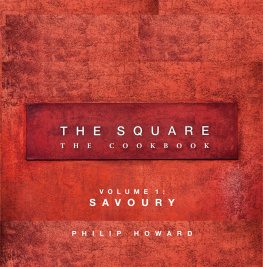
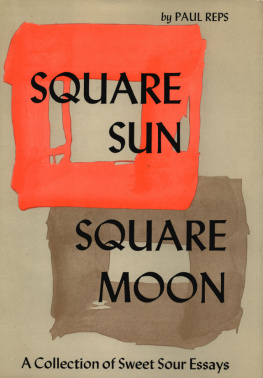
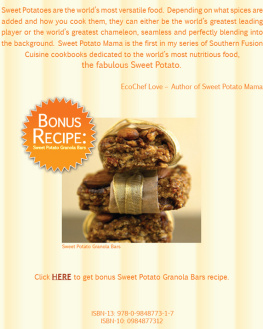
![Humm Daniel - Eleven Madison Park: The Next Chapter, Revised and Unlimited Edition: [a Cookbook]](/uploads/posts/book/252099/thumbs/humm-daniel-eleven-madison-park-the-next.jpg)


